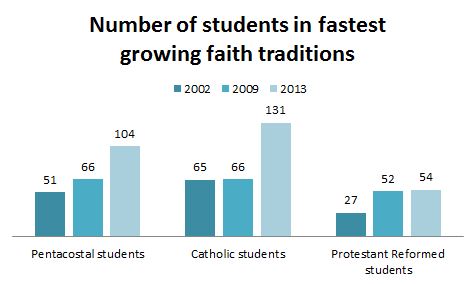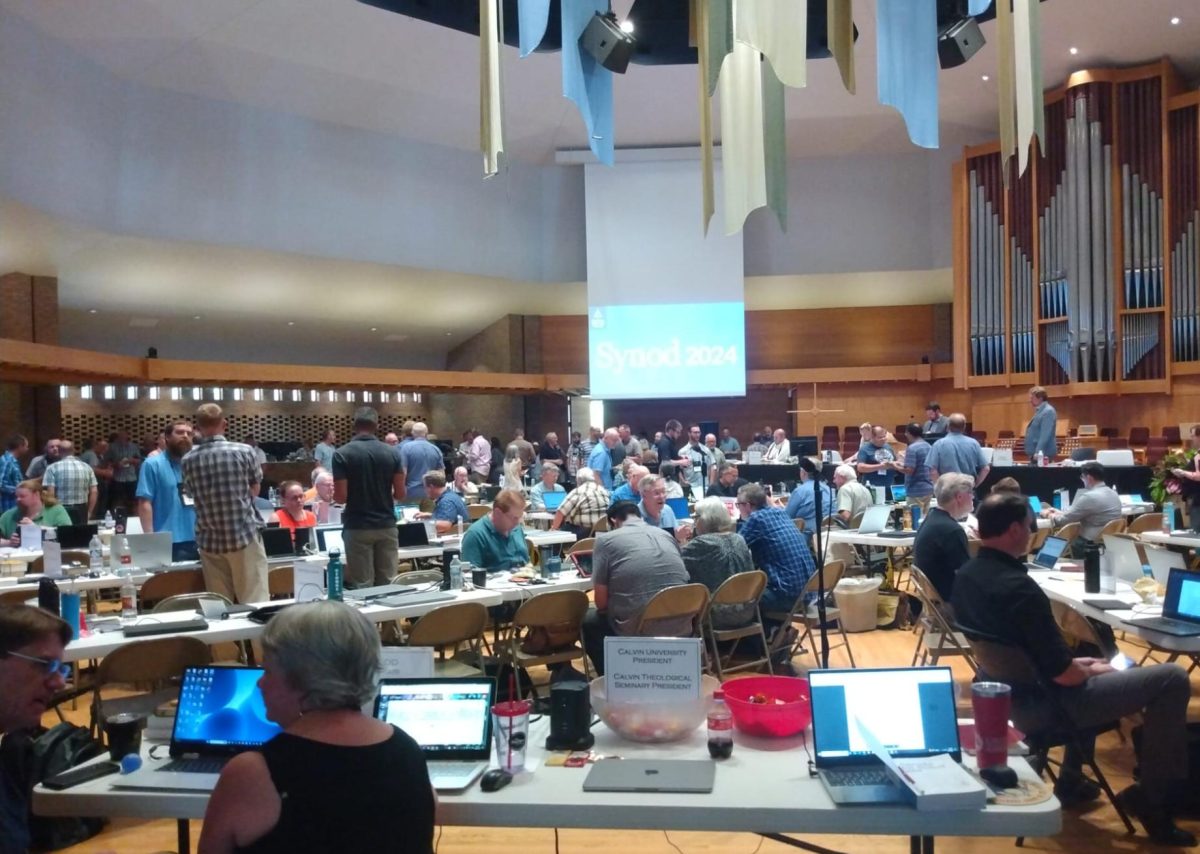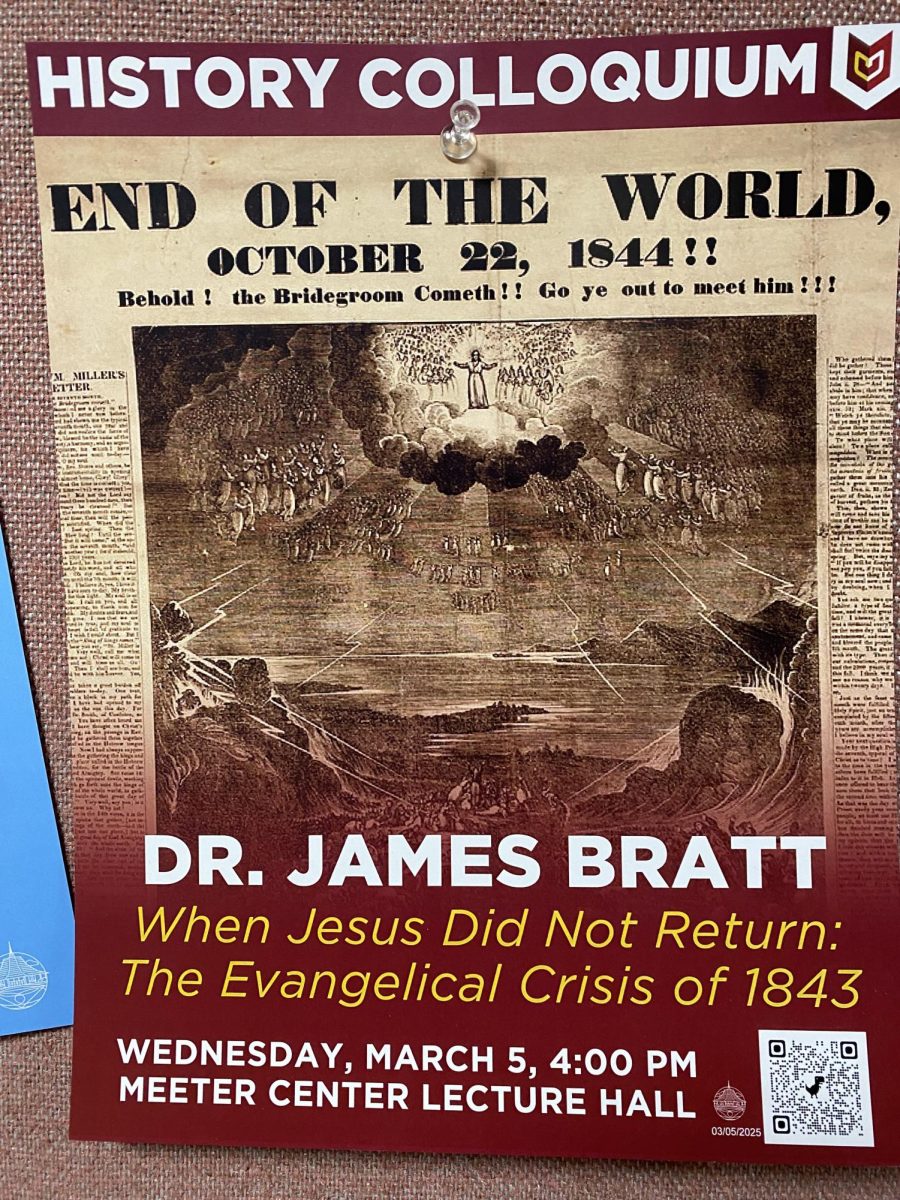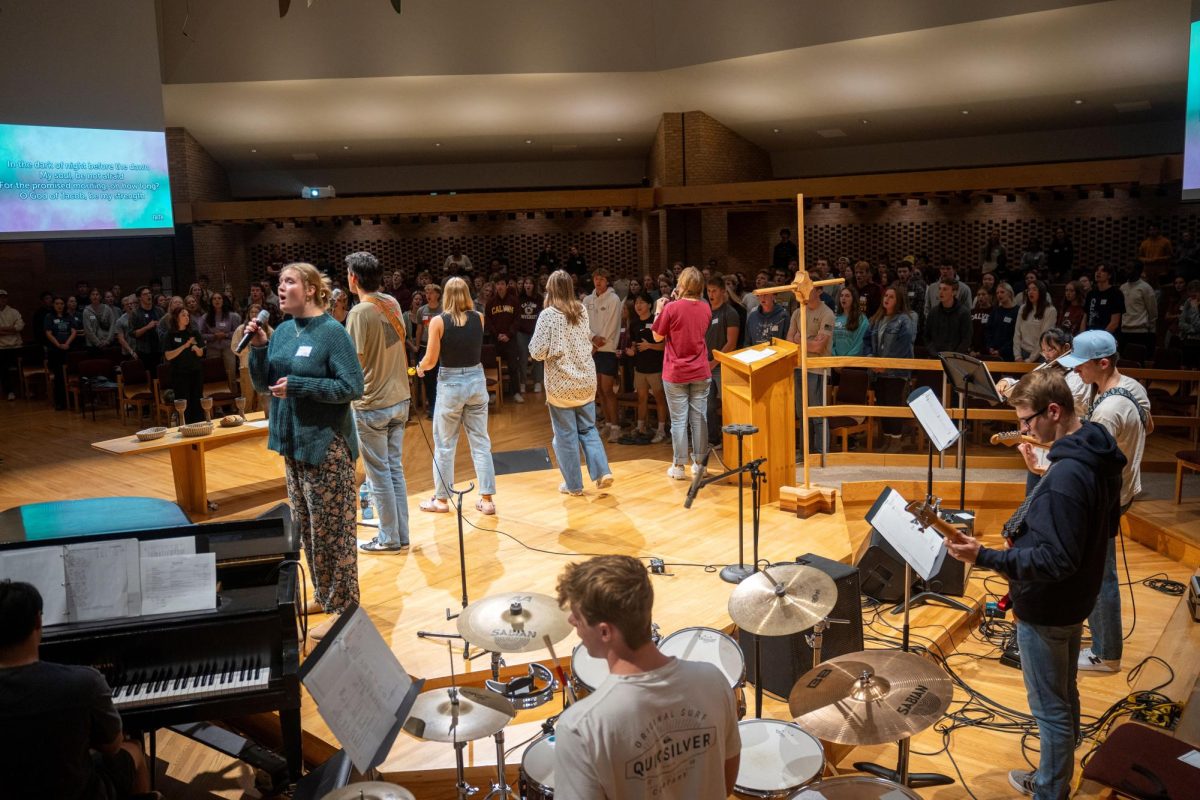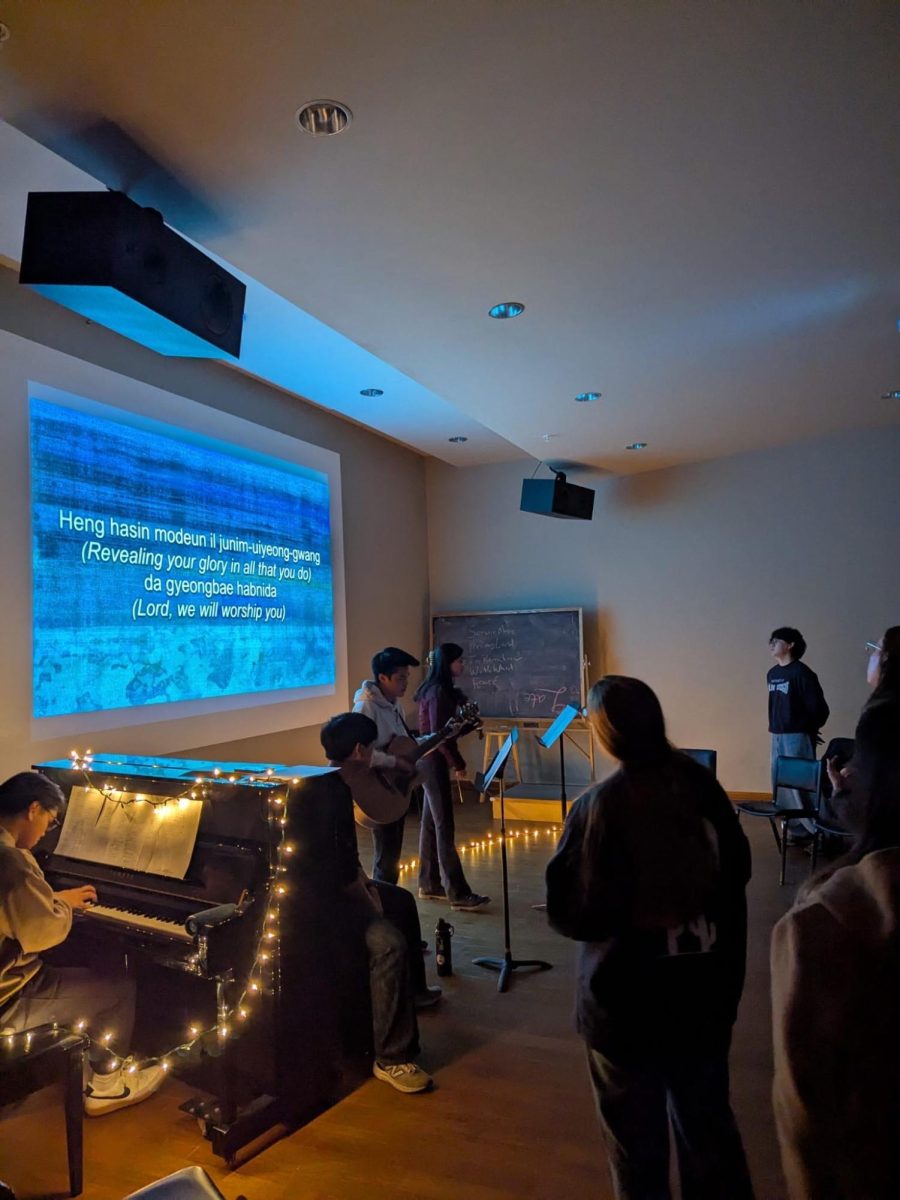Don’t know your five points of Calvinism? Do you question common grace? You may be in good company.
Calvin research has shown that the number of Christian Reformed (CRC) students on campus is decreasing steadily, with a rise in Pentecostal, Catholic and Protestant Reformed (PRC) students.
Calvin now has almost twice as many Pentecostal, Protestant Reformed and Catholic students as it had in 2002, according to a 2012 demographic analysis by John Witvliet, director of the Institute for Christian Worship, and a 2013 student report by Tom Van Eck, associate director of enrollment research.
Witvliet welcomes the new diversity, explaining that it enriches Calvin’s religious community.
“I think it very healthy to have a broad spectrum of Christian students at Calvin,” Witvliet said, “These students help all of us embrace the breadth and universality — that is, the catholicity — of the church.”
But what might have caused the rise in these three denominations? Mary Hulst, college chaplain, proposed an explanation for the rise in Catholic students, whose numbers rose from 66 to over 130 in the last four years.
“Catholics are looking for a Christian institution that takes intellect seriously, and they find this at Calvin,” Hulst said, citing conversations she has had with students.
Van Eck added that the Catholic tradition is strong among Calvin’s Hispanic population. The rise in Catholicism at Calvin can partly be attributed to Calvin’s increasing ethnic and racial diversity, Van Eck said.
The rise to over 50 PRC students on campus could be due to the steady birth rates within the denomination, though minimal research has been done to show this correlation. Dr. Witvliet cites a noticeable decline in CRC birth rates that correlates with CRC student’s enrollment at Calvin.
Hulst said that the rise in Pentecostal students, numbering over 100, might be a result of the growing number of international students on campus. She reflected on the new perspectives these students bring to the religious community.
“What Pentecostals bring to campus is a deeper appreciation of the lively work of the Holy Spirit,” Hulst said. “Re-Igknight (a monthly student-led worship night) came out of students’ desire for Spirit-led worship that didn’t have to be bound by time.”
Van Eck reflected on how the growing diversity might influence worship and academics at Calvin.
“We already have students who may not feel totally comfortable with the style of worship we have become accustomed to here,” Van Eck said, “or the emphasis on Reformed theology, the world-and-life view sketched out in classrooms.”
He talked about the differing student viewpoints that have appeared and will continue to appear.
“How will we accommodate Catholics who desire a more [highly] liturgical style of worship, or who view the Pope and [the Virgin] Mary quite differently than most Protestants? Or Pentecostals who are used to a much livelier form of worship?”
Though he raised questions that he knows are not answered in full, Van Eck was hopeful regarding Calvin’s ability to support the increase in denominational diversity.
“I think our chaplain’s office has been and will continue to make progress on this front,” Van Eck said.
Hulst said that Calvin College emphasizes diversity because of its reformed viewpoint that welcomes new ideas and perspectives.
“We are who we are because we are reformed,” Hulst said. “Being reformed means we are clear about engaging cultures — a big draw.”



